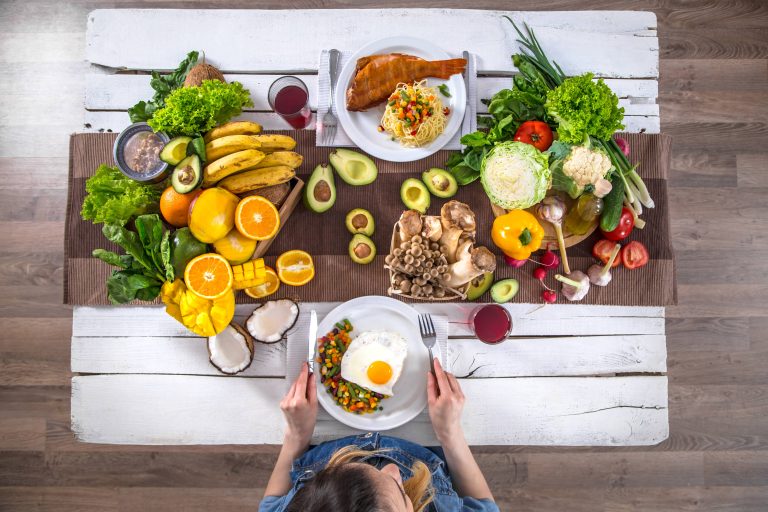
In today’s fast-paced world, maintaining a healthy lifestyle has become more important than ever. Whether you’re an athlete, a fitness enthusiast, or someone looking to enhance their health, consuming high-protein meals can be a game-changer in supporting muscle growth and overall well-being. This blog post aims to guide you through the essentials of creating high-protein meals that not only promote muscle growth but also delight your taste buds.
Understanding the Importance of Protein
Proteins are the building blocks of life, essential for the growth and repair of tissues. They are comprised of amino acids, which are vital for numerous bodily functions, including the synthesis of hormones and enzymes. For those engaged in regular physical activity, protein is critical in repairing and building muscle tissues that are broken down during exercise.
Why Opt for High-Protein Meals?
1. Muscle Growth: Consuming adequate protein ensures the provision of essential amino acids for muscle protein synthesis.
2. Satiety: High-protein meals keep you fuller longer, reducing unhealthy snacking and aiding in weight management.
3. Metabolic Boost: Proteins require more energy to digest, thus boosting metabolism slightly through the thermic effect of food.
4. Tissue Repair: Protein supports the healing and repair of muscles, which is crucial after workouts.
Building Your High-Protein Meal
Creating a high-protein meal doesn’t have to be complicated. Here’s how you can build a satisfying and nutritional meal that supports your muscle growth goals:
1. Choose a Lean Protein Source
Begin by selecting a high-quality protein source. Aim for options that are not only rich in protein but also low in saturated fats.
– Chicken Breast: Approximately 31 grams of protein per 100 grams, with minimal fat.
– Turkey: Offers around 29 grams of protein per 100 grams and is versatile for various recipes.
– Fish: Tuna, salmon, or cod provide not only protein but also heart-healthy omega-3 fatty acids.
– Eggs: A versatile option, with about 6 grams of high-quality protein per egg, along with essential antioxidants.
– Legumes: Such as lentils and chickpeas, which are excellent plant-based sources providing around 9 grams of protein per 100 grams.
2. Incorporate Whole Grains and Legumes
Whole grains and legumes not only supply additional protein but also provide fibers that aid in digestion and satiety.
– Quinoa: Contains all nine essential amino acids, making it a complete protein source.
– Brown Rice: A hearty grain with roughly 5 grams of protein per cup.
– Beans: Black beans and kidney beans are great for adding bulk and protein to meals.
3. Add Healthy Fats
Don’t shy away from including healthy fats, which are necessary for hormone production and nutrient absorption.
– Avocados: Packed with healthy monounsaturated fats and a decent protein content.
– Nuts and Seeds: Almonds, chia seeds, and flaxseeds provide healthy fats and protein.
– Olive Oil: Choose as a cooking base or as a dressing, which is rich in heart-protective fats.
4. Enhance with Vegetables
Vegetables are crucial for a balanced meal, offering vitamins, minerals, and antioxidants.
– Leafy Greens: Spinach and kale are nutrient-dense and complement high-protein dishes well.
– Broccoli: High in fiber, vitamin C, and provides a small amount of protein.
– Bell Peppers: Provide a sweet crunch along with lots of vitamin C.
Sample Meal Plan
Breakfast: Spinach and Feta Omelette
– Ingredients: 3 eggs, ½ cup spinach, ¼ cup feta cheese, 1 tablespoon olive oil.
– Instructions: Whisk eggs and pour into a heated skillet with olive oil. Top with spinach and feta. Fold and cook until set.
Lunch: Quinoa Chicken Salad
– Ingredients: 100g cooked chicken breast, 1 cup quinoa, mixed greens, cherry tomatoes, cucumber, 2 tablespoons olive oil and lemon dressing.
– Instructions: Toss all ingredients together, drizzle with dressing, and serve chilled.
Dinner: Salmon with Steamed Broccoli and Brown Rice
– Ingredients: 150g salmon fillet, 1 cup steamed broccoli, ½ cup cooked brown rice, lemon for garnish.
– Instructions: Grill salmon until cooked, serve with broccoli and brown rice, garnish with lemon.
Tips for Successful Meal Prep
1. Plan Your Meals: Design a weekly meal plan to streamline your cooking process, ensuring each meal has a good balance of protein, carbohydrates, and fats.
2. Batch Cooking: Prepare large quantities of proteins like chicken or quinoa and store them in portions for quick assembly during the week.
3. Diversify Your Recipes: Prevent boredom by experimenting with different spices, herbs, and cooking methods.
4. Smart Storage: Invest in quality airtight containers that keep meals fresh and transport-friendly.
5. Stay Hydrated: Don’t forget that adequate hydration is pivotal in muscle growth and recovery.
Conclusion
Creating high-protein meals to support muscle growth can be an enjoyable and fulfilling endeavor. By understanding the significance of protein and planning meals with a balance of nutrients, you can significantly improve your health outcomes. Remember, consistency in your diet, along with regular physical activity, is key to achieving your muscle growth goals. Happy cooking and meal prepping!










